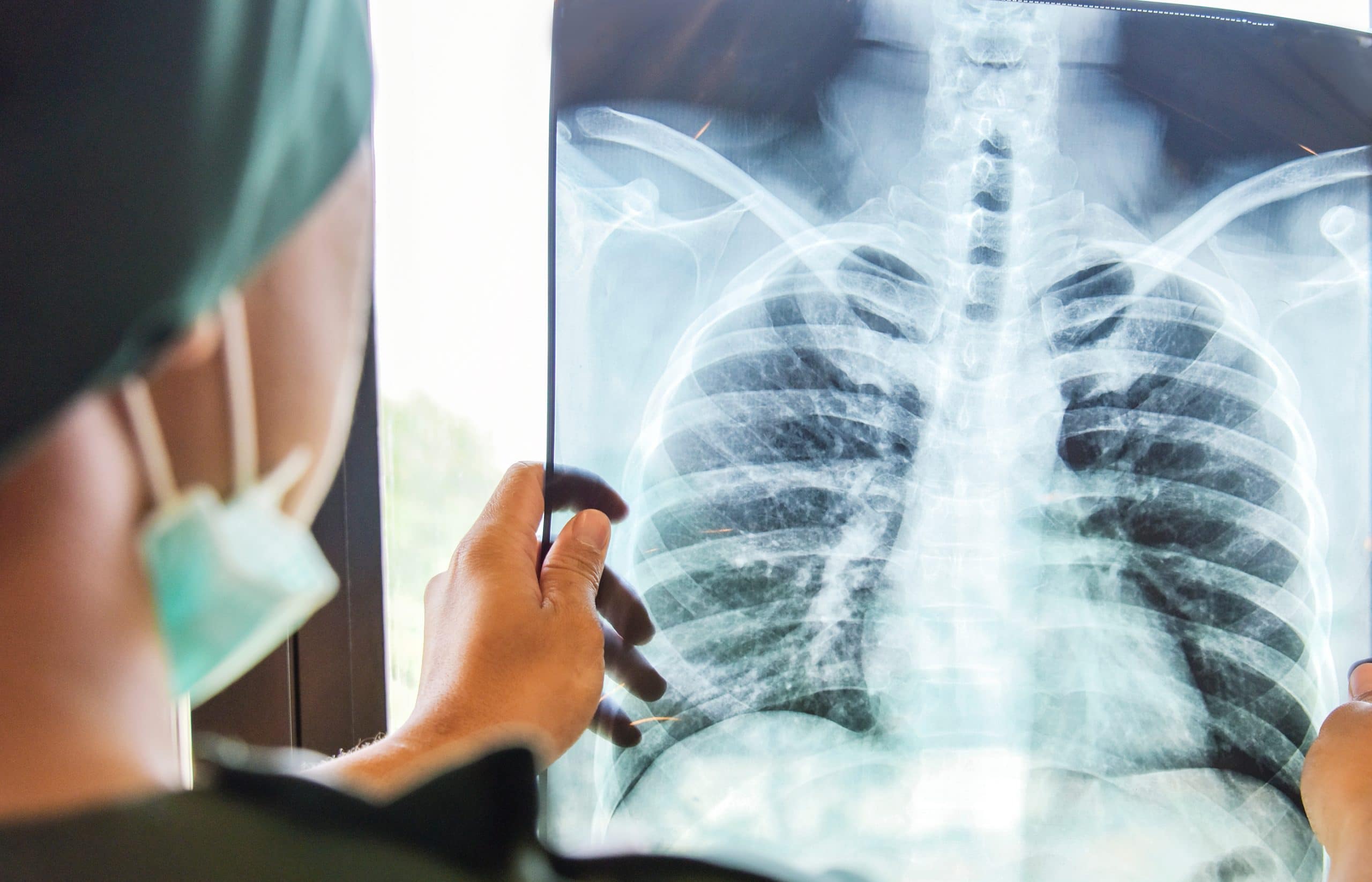TNM Cancer Staging System
The TNM staging system is a system that doctors use to determine the spread of cancer in a patient’s body. The “T” represents the tumor size and spread of cancer to nearby tissue, “N” represents the spread of cancer to nearby lymph nodes, and “M” represents metastasis (when cancer spreads to other parts of the body). Doctors most often use the TNM staging system to describe cancer, including lung cancer.

What is the TNM Cancer Staging System?
Many hospitals, clinics, and cancer treatments centers across the United States follow the TNM staging system to determine where cancer has spread and how many organs and tissue are affected. A cancer patient’s pathology report contains a description of their cancer based on the conditions of the TNM system. In some cases, doctors may use a different staging system.
How Does TNM Staging System Work?
There are three parts of the TNM staging system, including T, N, and M:
T – Imaging scans can determine the size and extent of the primary tumor.
N – Imaging scans can detect if cancer has spread to nearby lymph nodes, while a biopsy will confirm it.
M – Doctors conduct tests to determine whether cancer has metastasized from the primary tumor to other parts of the body.
Mandatory Parameters
Each part of the system can be further categorized using numbers, called mandatory parameters. For example, your cancer may be described as T2N1M1 or T1N0M0. The meanings of each number are listed below:
Primary Tumor (T)
- TX – The main tumor cannot be measured.
- T0 – The main tumor cannot be found.
- T1, T2, T3, T4 – The size and/or extent of the main tumor. The higher the number, the larger the tumor. T’s can be further divided, such as T3a and T3b.
Regional Lymph Nodes (N)
- NX – Cancer in nearby lymph nodes cannot be measured.
- N0 – There is no cancer in nearby lymph nodes.
- N1, N2, N3 – The number and location of lymph nodes that contain cancer. The higher the number after the N, the more lymph nodes that contain cancer.
Distant Metastasis (M)
- MX – Metastasis cannot be measured.
- M0 – Cancer has not spread to other parts of the body.
- M1 – Cancer has spread to other parts of the body.
TNM Staging System For Lung Cancer
Doctors use the TNM system to determine the stage of lung cancer. The TNM staging system for lung cancer can range from stage 1 (I) lung cancer to stage 4 (IV) lung cancer. The higher the stage, the more cancer has spread. The lower the stage, the less cancer has spread. Each lung cancer diagnosis is unique, but staging systems can help determine the outlook and choose the best treatment options.
Cancer Grades
A cancer grade is a description of abnormal cancer cells and tissue compared to healthy cells. Low-grade tumors contain fewer abnormalities and are less aggressive compared to higher-grade cells that spread quickly and are more aggressive. Cancer grades can be determined by looking at the cells and tissue under a microscope.
After looking at the cell structure, doctors assign a numerical “grade:”
Grade 1: Cancer cells appear like normal cells and are not rapidly growing.
Grade 2: Cancer cells do not appear like normal cells and spread faster than normal cells.
Grades 3-4: Cancer cells appear more abnormal and spread aggressively.
The tumor grade is not the same thing as the cancer stage but can help determine how likely cancer will spread to other parts of the body.
What Are The Different Types Of Cancer Staging?
There are five different stages of lung cancer using the TNM staging system.
Stage 0: At stage 0, abnormal cells are present but are dormant, meaning they are not actively spreading to nearby tissues.
Stages I-III: At stages 1 through 3, cancer is present and actively spreading into nearby tissues. The higher the number, the larger the tumor. A stage II lung cancer patient, for example, may have a tumor that spreads to the entire affected lung. A stage III lung cancer patient’s tumor likely spreads to nearby lymph nodes and other chest cavity organs and tissues.
Stage IV: At stage IV, lung cancer spreads into distant parts of the body, such as the bones.
Clinical Stagings vs. Pathologic Staging
Doctors determine someone’s clinical staging based on information received up to the fire line of treatment. Pathologic staging, however, includes both clinical information and information received from pathological examinations of regional lymph nodes.
Post Therapy Staging
Doctors may use post-therapy staging after the first treatment line to measure and categorize cancer’s response to lung cancer treatment. A post-therapy staging may be given before or after surgery.
Restaging
A restaging occurs when cancer is staged again after the initial staging. Patients undergo similar tests, including imaging tests, biopsies, and surgery, they underwent during their initial staging.
TNM Staging System For Other Cancers
The TNM staging system is used for several types of cancer. Although there are several types of staging systems for cancer, they all typically follow the same guidelines and include similar information, including:
- Location of tumor
- Cell type
- Size of tumor
- Distance of spread (metastasis)
- Location of spread


